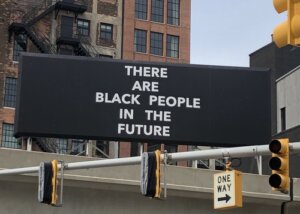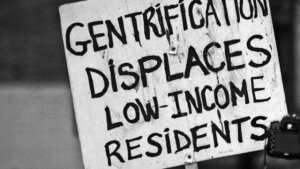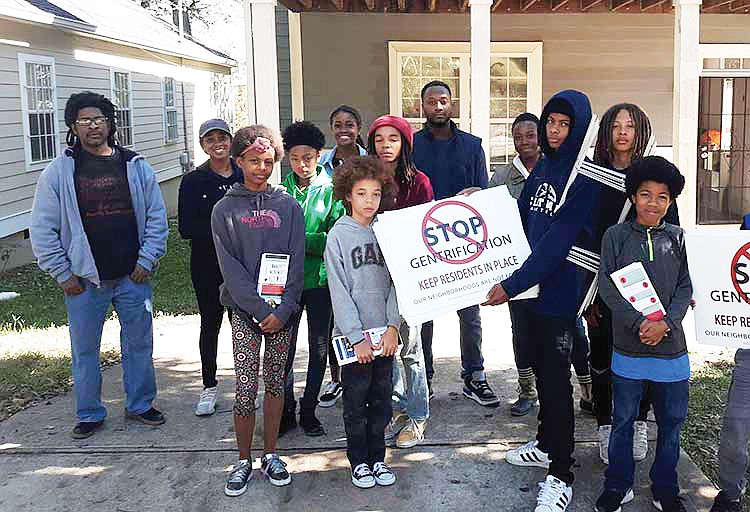In the tapestry of American cities, the undeniable imprint of African-American culture and history has woven vibrant communities, rich in resilience and creativity. However, as the winds of change blow through urban landscapes, a complex issue looms large: gentrification. Across America, African-American cities are grappling with the profound impacts of this transformative process, giving rise to a pressing need for thoughtful examination and dialogue.
What is gentrification?
Gentrification is an intricate interplay of economic forces, urban development, and shifting demographics, that carries both promises of progress and challenges to the fabric of African-American communities. It involves the influx of wealthier residents, businesses, and investments, resulting in the displacement of the original residents and a change in the character and affordability of the neighborhood. The inception of this phenomenon can be traced back to the mid-2oth century, when the term was coined by British sociologist Ruth Glass in 1964.

Impact on the Black Community:
- Displacement and Housing Affordability: Gentrification often leads to rising housing costs, making it difficult for longtime residents, including many Black families and individuals, to afford to stay in their neighborhoods. As property values increase, landlords may also raise rents or opt to sell their properties, forcing out lower-income residents. This displacement disrupts established social networks and can result in the loss of affordable housing options.
- Economic Inequality: The phenomenon can exacerbate existing economic inequalities. As neighborhoods become more affluent, the cost of goods and services may rise, making it harder for lower-income residents, who are disproportionately Black, to afford basic necessities. Additionally, the arrival of new businesses often caters to the preferences and purchasing power of wealthier residents, neglecting the needs of long-time community members.
3. Educational Disparities: It can impact the education system in affected neighborhoods. As more affluent families move in, there may be increased demand for high-quality schools, leading to changes in enrollment patterns and resource allocation. This can disadvantage Black students who already face educational inequities, as resources and attention may shift away from schools serving predominantly Black communities.
4. Social and Political Exclusion: It has the power to manifest social divisions and tensions between the incoming residents and the existing community. The influx of new residents may lead to the marginalization and exclusion of long-time Black residents, who may not feel represented in decision-making processes or community development initiatives. This can perpetuate a cycle of power imbalance and further marginalize Black voices in shaping their own neighborhoods.
5. Cultural Erosion: Last but not least, it can erode the cultural identity and social fabric of Black communities. As new residents move in, the neighborhood’s character may change, displacing longstanding businesses, community centers, and cultural institutions that have served as pillars of the community. This can result in the loss of cultural heritage, sense of belonging, and social cohesion.

Black communities are implementing a range of diverse strategies in their efforts to combat gentrification. They are working diligently to preserve the character and integrity of their neighborhoods, safeguard their rich cultural heritage, and actively resist displacement by engaging in the following actions:
- Cultural Preservation: Black communities recognize the importance of preserving their cultural heritage and identity in the face of gentrification. Efforts are made to protect cultural institutions, landmarks, and community spaces. Additionally, community members engage in cultural activism, art projects, and storytelling to celebrate and reclaim their histories and traditions.
- Community Development and Ownership: African-American communities are taking control of their own development by establishing community-led initiatives. This includes supporting Black-owned businesses, promoting local entrepreneurship, and creating cooperative economic models that empower community members. By fostering economic opportunities within the community, these initiatives help mitigate the negative impacts of gentrification.
- Policy Advocacy: Community leaders and organizations are advocating for policy changes at the local, state, and federal levels. They seek to implement policies that protect tenants’ rights, enact rent control measures, create affordable housing quotas in new developments, and promote equitable land-use policies. They also work to strengthen anti-displacement protections and increase investment in marginalized communities.
- Community Benefits Agreements: Black communities negotiate Community Benefits Agreements (CBAs) with developers and city officials to ensure that new developments directly benefit the existing community. CBAs outline specific provisions such as affordable housing, local hiring preferences, funding for community programs, and the preservation of cultural assets. These agreements aim to mitigate the negative impacts of gentrification and secure tangible benefits for residents.
Notable African-American cities impacted by gentrification:
- Newark, New Jersey
- Chicago, Illinois
- Philadelphia, Pennsylvania
- Houston, Texas
- Washington, D.C
- Harlem, New York City
- Oakland, California
Bringing it home:
Gentrification is commonly associated with the term urban renewal and revitalization. However, it is crucial to recognize that these discussions cannot be complete without the active participation of the African-American community. Gentrification, when viewed merely as an abstract concept, can overlook the profound impact it has on dehumanizing a group of people who have persevered through generations, building their own cultures and traditions despite significant challenges in a country that hasn’t always made their existence easy.
It’s essential to understand that gentrification is not solely a problem affecting African-Americans or Black individuals; it is an issue that permeates American society. Addressing gentrification requires continuous and open dialogue, fostering transparency and understanding among all stakeholders. By engaging in these conversations, we can work towards finding meaningful solutions to the challenges posed by gentrification and its impact on communities.

WRITER: <


